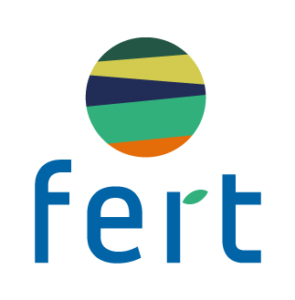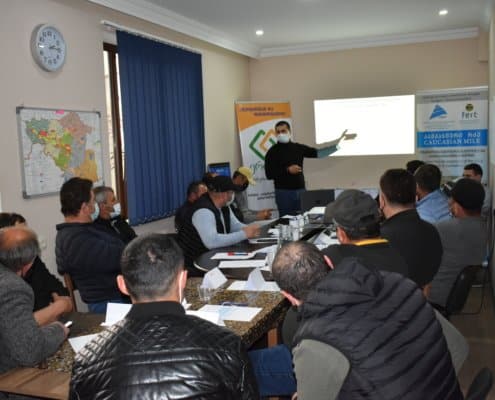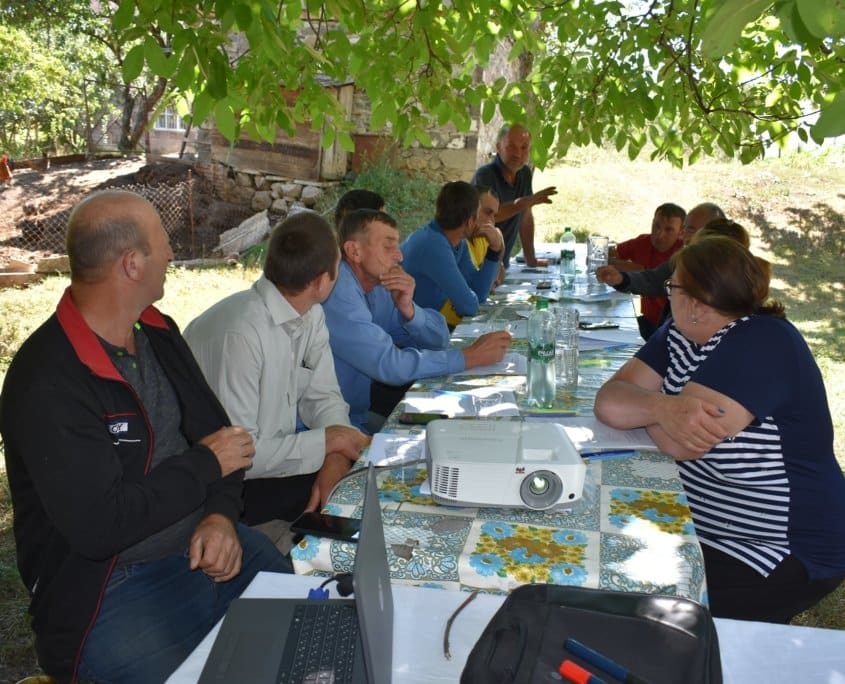Since 2018, the GBDC and Fert have been supporting volunteer Georgian farmers, members of Ertoba, in the economic monitoring of their farms to enable them to better understand the impact of their practices on their economic results and to raise their awareness of the importance of a writing culture and economic monitoring.
Seated around the table, the 16 Georgian farmers are concentrated, and for good reason, this Tuesday, April 13, the annual restitution of their economic results for the year 2020 will take place. Inspired by the EcoLait method deployed in France by the BTPL*, this monthly monitoring allows to identify the main costs and products of the dairy workshop, to calculate a gross margin, and, in group, to analyze them to better understand the variations of results between farmers.
*Technical Office for Dairy Promotion, Fert partner
A simple tool to reinforce the culture of writing
Each month, the 16 farmers involved complete their data sheets: number of cows milked, volume of milk produced, volume of milk sold fresh and/or processed, quantity of feed purchased and consumed, veterinary expenses, etc. This is essential information that they send to their agricultural advisor to compile in a database. In return, each of them receives a summary sheet allowing them to compare the results from one month to the next. The tool is deliberately simple so as to encourage farmers who are not used to writing.
The group, a space for debate
Once a year, a collective restitution is organized to share everyone’s results. In the group, where a climate of trust exists, the choice was made not to anonymize the results to facilitate the debate.
After presenting the main data of the group, the advisor starts his presentation by analyzing the price of milk: comparison with the previous year, comparison between the average of the group and the national data, fluctuation over the year, comparison between producers according to the way of valuing milk. These comparisons highlight the correlation between price variation and milk production.
Thanks to graphical analyses, farmers can become aware of their production differences according to their choices and practices, whether it be on feed (pasture practices, effects of feed prices or low availability of fodder due to drought during the summer) or on reproduction management (impact of artificial insemination on the potential of the cows, duration of dry period).
When the economic sanctions the technical
The annual restitution is also an opportunity to present a classement of the farmers by gross margin per cow. The differences are sometimes significant. This year, the gross margins varied from 700 GEL/cow to 4,300 GEL/cow, while the group average was 1,790 GEL/cow. Some farmers may be surprised at their good position, others may be trying to justify it; but all are interested in better understanding what explains these results. Although the gross margin offers a partial view of reality, it allows for comparison, exchange and questioning of what could be improved.
For 2021, several avenues were discussed to improve the results of Georgian farmers, including improving the milk potential of cows by artificial insemination, the search for greater forage autonomy or the development of cheese production on the farm for a better use of milk.





